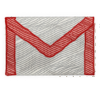Is your family prepared? As northerners set into motion an Emergency Preparedness Week, catastrophic flooding to the American south caused rivers to swell forty feet in a mere six hours; killing ten within the first twenty-four hours of a wet thirty-six hour nightmare. Serving only a timely reminder, flooding to the Kentucky and Tennessee regions shed light upon why we should be prepared for the unexpected. Mother Nature’s fury should raise awareness to every household that safety can be compromised in seconds, at times without warning, devastation and destruction of weather should be viewed as an immediate danger that cannot be ignored. If anything, the rough weather of Kentucky has taught me how to live in survivor mode; as quite frequently the state has life threatening weather.
Emergency kits can be purchased at most retail shopping outlets, each kit depends upon the needs of the purchaser and can be acquired for various size households at a costly expense. Such expense may leave your home unprepared in an unexpected national disaster. The objective of this article is to raise your awareness that it shouldn’t cost an arm and a leg to save an arm, leg, or life. Simply emergency kits can be put together with more protection, frugally and at home; first you must be aware of the items that need to be procured for your family and have study waterproof containers to gather the listed items in.
20 Critical Emergency Supply Items
(1.) One gallon of water needs to be stocked per person per day at least; for at least three days for both drinking purposes and sanitation means. Sanitation is important to keep your family healthy in an emergency. It’s a great idea to stock a few extra gallons extra, for your sanitation needs and one gallon per person for drinking purposes.
(2.) At least a three-day supply of non-perishable food, per person. My recommendations for food and water are the same, keep additional food on hand (per person) so to have a five to seven day supply. You never want to be put in a situation like the Donner gang, right? Your family will need a hand-held can opener for this food with outdoor means to heat food if cooking is opted. Depending on the needs of your family, if you have an infant powered formula and baby food should be stored along with pet food (per pet) if you have pets. Jarred baby foods are also a good idea for adults as this takes up little room in small spaces and will keep you alive!
(3.) Flashlights with extra batteries, oil and oil lamps, and other lighting means such as solar power lights or match-lit torches. Crank flashlights or wind up flashlights need to be invested in as well as oil and oil lamps, from my family to yours.
(4.) NOAA battery powered weather radios and/or hand cranked radios, plus additional batteries for each. NOAA radios are government radios that play only emergency updates for the local programmed area, these radios can be purchased online and are affordable for the life saving means of every family. Within a powerless, eight day ice storm I had a single battery radio; the 8 volt battery played the radio on medium volume for the eight day duration –- however, it is recommended to have some additional batteries of all sizes.
(5.) First Aid Kits doubled for the size of your family along with prescription medication and needs for any special needs family member such as eyeglasses and insulin.
(6.) 1 or 2 loud whistle(s) to alert in case of an entrapment and dusk masks should be supplied to help filter contaminated air protecting yourself and your family.
(7.) Mobile phone with an extra battery and charger, acknowledgements should be kept in mind for solar power chargers for emergency purposes corresponding with each mobile phone. Each kit needs to always have one phone, one extra mobile battery, and one charger. This phone should be stored with all emergency numbers for your local area along with immediate contacts and a per-minute mobile phone will do great for your frugal emergency kit
(8.) Tools such as pliers and wrenches should be kept to turn off any utilities compromised in the event such as gas and water. Other tools should be kept on hand in the event of an emergency and for little cost can be purchased at Harbor Freight.
(9.) Personal sanity items along with moist towelettes, garbage bags, and ties for those bags. Diapers for children and sanity items for females should also be kept along with tampons. The cotton of tampons is a wonder way to set a fire if needed to keep warm, it sure beats rubbing two sticks together!
(10.) Important papers such as insurance policies, birth certificate copies, passport/green card copies, mediation documentation, copies of identification etc should be kept with additional cash, or credit cards for emergency events. Plastic waterproof document folders should be utilized for this purpose.
(11.) Three complete changes of clothing per family member, you may get by with two however I recommend three complete changes with additional underwear
(12.) Sleeping gear and warm blankets for each member of your family depending on the climate, it is always a great idea to have blankets to cushion the ground even if in a warmer climate so please keep this in mind for your family; survivor mode is quite difficult for children and also for adult survival.
(13.) Fire Extinguisher that has the capacity to put out a small fire should be kept in a safe area, I also recommend always keeping one small firearm with ammunition for safety purposes, a medium sized knife/hunting knife, and pocket knife. Always use proper safety and keep these dangerous items away from your children but from what I’ve been through in Kentucky believe me
(14.) As I said prior, your sanitation is important; you will need to know how to treat contaminated water with sixteen drops of chlorine bleach from a medication dropper. Also nine parts of water to one part of bleach should be used sparingly for cleaning and sanitation.
(15.) Occupation toys and tools for children such as books, puzzles, games, hand held video games or media players with additional battery power with paper and pencils. Survival mode is difficult for young ones so please remember to be accommodating to them as much as possible as the adult in charge.
(16.) Strike matches should be kept inside waterproof containers; these containers can be used for additional measures in emergencies. Matches need to be used for starting fires and eating, never strike a match or flick a lighter with the smell of gas in the air or the hiss of a gas leak on your horizon. Use safety with these items as much as you would use with firearms. My recommendation also is to put a pack of Bic Lighters into your kits, for a much easier fire starter; you will not be sorry!
(17.) In the Army mess kits are used for food consumption, your frugal emergency kit will touch upon that and expand on the idea a bit; as reminders should be noted. You will need to pack each mess kit as a picnic basket including plates, napkins, sporks (spoons/forks), and cups; these should always be disposable and provided extra per family member. Toilet paper and tissue is a valuable and needed luxury in each emergency survival kit, from my family to yours toilet paper is a must! Moist towelettes also add additional protection; however my recommendation is for a tote of baby wipes. If you have an infant in your family and wipes are a most keep an extra packet or box on hand.
(18.) Maps of the local area in case of rerouting, you will not be able to depend on navigation systems if you are traveling on foot and without a signal, mobile service may be down at the time of your emergency. Your neighbors and other’s traveling with you will thank you for remembering area maps.
(19.) Snacks for children should be packed per child or hungry adult so that food supplies are not depleted. Fruit roll ups, peanut butter crackers, peanuts, and non-perishable food items such as this are always needed.
(20.) Emergency kits should be packed in a study waterproof tote, paper documentation, matches, and first aid kits will be needed to be packed separate in waterproof cases and included in each kit with check lists per kit. One kit should be kept per household in a designated place. First aid kits, small emergency kits, additional non-perishable food, baby wipes, wind up flashlights, and tool kits should be kept in primacy vehicles; along with toilet paper and a spare key that can be kept under seats by inexpensive means.
© Copyright Hollywood Geek Chic May 2010
Emergency kits can be purchased at most retail shopping outlets, each kit depends upon the needs of the purchaser and can be acquired for various size households at a costly expense. Such expense may leave your home unprepared in an unexpected national disaster. The objective of this article is to raise your awareness that it shouldn’t cost an arm and a leg to save an arm, leg, or life. Simply emergency kits can be put together with more protection, frugally and at home; first you must be aware of the items that need to be procured for your family and have study waterproof containers to gather the listed items in.
20 Critical Emergency Supply Items
(1.) One gallon of water needs to be stocked per person per day at least; for at least three days for both drinking purposes and sanitation means. Sanitation is important to keep your family healthy in an emergency. It’s a great idea to stock a few extra gallons extra, for your sanitation needs and one gallon per person for drinking purposes.
(2.) At least a three-day supply of non-perishable food, per person. My recommendations for food and water are the same, keep additional food on hand (per person) so to have a five to seven day supply. You never want to be put in a situation like the Donner gang, right? Your family will need a hand-held can opener for this food with outdoor means to heat food if cooking is opted. Depending on the needs of your family, if you have an infant powered formula and baby food should be stored along with pet food (per pet) if you have pets. Jarred baby foods are also a good idea for adults as this takes up little room in small spaces and will keep you alive!
(3.) Flashlights with extra batteries, oil and oil lamps, and other lighting means such as solar power lights or match-lit torches. Crank flashlights or wind up flashlights need to be invested in as well as oil and oil lamps, from my family to yours.
(4.) NOAA battery powered weather radios and/or hand cranked radios, plus additional batteries for each. NOAA radios are government radios that play only emergency updates for the local programmed area, these radios can be purchased online and are affordable for the life saving means of every family. Within a powerless, eight day ice storm I had a single battery radio; the 8 volt battery played the radio on medium volume for the eight day duration –- however, it is recommended to have some additional batteries of all sizes.
(5.) First Aid Kits doubled for the size of your family along with prescription medication and needs for any special needs family member such as eyeglasses and insulin.
(6.) 1 or 2 loud whistle(s) to alert in case of an entrapment and dusk masks should be supplied to help filter contaminated air protecting yourself and your family.
(7.) Mobile phone with an extra battery and charger, acknowledgements should be kept in mind for solar power chargers for emergency purposes corresponding with each mobile phone. Each kit needs to always have one phone, one extra mobile battery, and one charger. This phone should be stored with all emergency numbers for your local area along with immediate contacts and a per-minute mobile phone will do great for your frugal emergency kit
(8.) Tools such as pliers and wrenches should be kept to turn off any utilities compromised in the event such as gas and water. Other tools should be kept on hand in the event of an emergency and for little cost can be purchased at Harbor Freight.
(9.) Personal sanity items along with moist towelettes, garbage bags, and ties for those bags. Diapers for children and sanity items for females should also be kept along with tampons. The cotton of tampons is a wonder way to set a fire if needed to keep warm, it sure beats rubbing two sticks together!
(10.) Important papers such as insurance policies, birth certificate copies, passport/green card copies, mediation documentation, copies of identification etc should be kept with additional cash, or credit cards for emergency events. Plastic waterproof document folders should be utilized for this purpose.
(11.) Three complete changes of clothing per family member, you may get by with two however I recommend three complete changes with additional underwear
(12.) Sleeping gear and warm blankets for each member of your family depending on the climate, it is always a great idea to have blankets to cushion the ground even if in a warmer climate so please keep this in mind for your family; survivor mode is quite difficult for children and also for adult survival.
(13.) Fire Extinguisher that has the capacity to put out a small fire should be kept in a safe area, I also recommend always keeping one small firearm with ammunition for safety purposes, a medium sized knife/hunting knife, and pocket knife. Always use proper safety and keep these dangerous items away from your children but from what I’ve been through in Kentucky believe me
(14.) As I said prior, your sanitation is important; you will need to know how to treat contaminated water with sixteen drops of chlorine bleach from a medication dropper. Also nine parts of water to one part of bleach should be used sparingly for cleaning and sanitation.
(15.) Occupation toys and tools for children such as books, puzzles, games, hand held video games or media players with additional battery power with paper and pencils. Survival mode is difficult for young ones so please remember to be accommodating to them as much as possible as the adult in charge.
(16.) Strike matches should be kept inside waterproof containers; these containers can be used for additional measures in emergencies. Matches need to be used for starting fires and eating, never strike a match or flick a lighter with the smell of gas in the air or the hiss of a gas leak on your horizon. Use safety with these items as much as you would use with firearms. My recommendation also is to put a pack of Bic Lighters into your kits, for a much easier fire starter; you will not be sorry!
(17.) In the Army mess kits are used for food consumption, your frugal emergency kit will touch upon that and expand on the idea a bit; as reminders should be noted. You will need to pack each mess kit as a picnic basket including plates, napkins, sporks (spoons/forks), and cups; these should always be disposable and provided extra per family member. Toilet paper and tissue is a valuable and needed luxury in each emergency survival kit, from my family to yours toilet paper is a must! Moist towelettes also add additional protection; however my recommendation is for a tote of baby wipes. If you have an infant in your family and wipes are a most keep an extra packet or box on hand.
(18.) Maps of the local area in case of rerouting, you will not be able to depend on navigation systems if you are traveling on foot and without a signal, mobile service may be down at the time of your emergency. Your neighbors and other’s traveling with you will thank you for remembering area maps.
(19.) Snacks for children should be packed per child or hungry adult so that food supplies are not depleted. Fruit roll ups, peanut butter crackers, peanuts, and non-perishable food items such as this are always needed.
(20.) Emergency kits should be packed in a study waterproof tote, paper documentation, matches, and first aid kits will be needed to be packed separate in waterproof cases and included in each kit with check lists per kit. One kit should be kept per household in a designated place. First aid kits, small emergency kits, additional non-perishable food, baby wipes, wind up flashlights, and tool kits should be kept in primacy vehicles; along with toilet paper and a spare key that can be kept under seats by inexpensive means.
© Copyright Hollywood Geek Chic May 2010





























